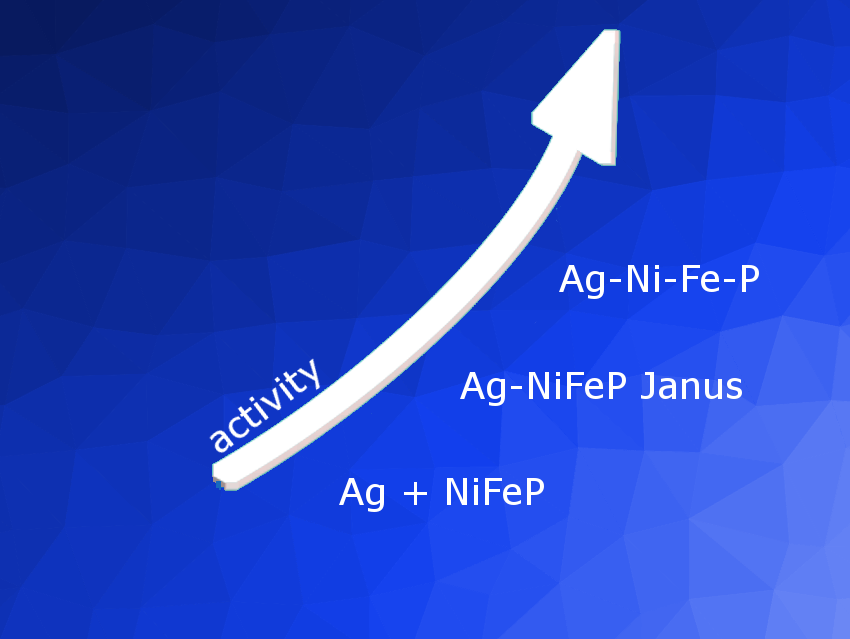Multi-elemental nanoparticles (MENPs) can integrate multiple catalytic functions from different elements into one nanoparticle. However, it is difficult to synthesize Ag-based MENPs with transition metals such as Ni and Fe due to strong phase segregation between Ag and the other metals.
Yushan Yan, Beijing University of Chemical Technology, China, and University of Delaware, Newark, USA, Zhongbin Zhuang, Beijing University of Chemical Technology, China, and colleagues have synthesized Ag-based multielemental nanoparticles (MENPs) by introducing P through a relative low-temperature one-pot solution-based synthetic approach. P helps the amalgamation of Ag with other metals.
The obtained Ag–Ni–Fe–P MENPs show excellent bifunctional oxygen reduction reaction (ORR)/oxygen evolution reaction (OER) catalytic activities; the potential gap of the potential is at 10 mA·cm–2 for OER and the half-wave potential for ORR is 630 mV. More importantly, the synergistic effect from the MENPs gives them even higher ORR or OER activity than the Ag or NiFeP nanoparticles.
The scientists have fabricated a rechargeable Zn–air battery using the Ag–Ni–Fe–P MENPs as the air electrode. The battery has an energy efficiency of ∼60 % at 10 mA cm–2. Its performance is almost unchanged during a 250 h of operation, outperforming the Pt/C+IrO2-based battery.
The team attributes the enhanced ORR activity to the enriched dual Ag–Ni, Fe sites, and the exceptional OER activity to the electronic tuning effect from Ag promoting the oxidation of NiFeP. The Ag–Ni–Fe–P/C-based ZABs show high performance and good cyclability. These results suggest that the MENPs are promising for multifunctional catalysis.
- Synthesis of Ag–Ni–Fe–P Multielemental Nanoparticles as Bifunctional Oxygen Reduction/Evolution Reaction Electrocatalysts,
Zhiyuan Xu, Xuejiang Zhang, Xingdong Wang, Jinjie Fang, Yufeng Zhang, Xuerui Liu, Wei Zhu, Yushan Yan, Zhongbin Zhuang,
ACS Nano 2021.
https://doi.org/10.1021/acsnano.1c00305


